elementary OS Loki in Version 0.4 erschienen (stable)
 Das Open Source Betriebssystem elementary OS wurde auf die neueste Version 0.4 „Loki“ aktualisiert. elementary OS basiert auf Linux und ist für Desktop-PCs und Notebooks gleichermaßen einsetzbar. Das Update setzt auf der im April 2015 veröffentlichten Vorgängerversion „Freya“ auf, welche laut Entwickler immerhin seitdem 1,2 Millionen Mal heruntergeladen wurde. Und so ein Versionssprung kann bei einem Betriebssystem durchaus einige größere Änderungen bedeuten. So auch hier, immerhin gibt es neben optischen Generalüberholungen und einigen neuen Schaltern auch reichlich neue frische Features zu vermelden.
Das Open Source Betriebssystem elementary OS wurde auf die neueste Version 0.4 „Loki“ aktualisiert. elementary OS basiert auf Linux und ist für Desktop-PCs und Notebooks gleichermaßen einsetzbar. Das Update setzt auf der im April 2015 veröffentlichten Vorgängerversion „Freya“ auf, welche laut Entwickler immerhin seitdem 1,2 Millionen Mal heruntergeladen wurde. Und so ein Versionssprung kann bei einem Betriebssystem durchaus einige größere Änderungen bedeuten. So auch hier, immerhin gibt es neben optischen Generalüberholungen und einigen neuen Schaltern auch reichlich neue frische Features zu vermelden.
Fangen wir der Reihe nach an. Zuerst einmal gibt es überarbeitete Indikatoren, die an jeder Stelle des Systems ins Auge fallen. Zusätzlich wechseln diese nun je nach Helligkeit und Farbe des verwendeten Wallpapers automatisch ihre Farbe zwischen hell oder dunkel.

Inzwischen werden alle Apps, die von Haus aus Benachrichtigungen versenden können, in den Benachrichtigungseinstellungen angezeigt. Hier kann man auch festlegen, welche Apps tatsächlich Meldungen anzeigen dürfen. Auch die Netzwerkeinstellungen habe man deutlich modernisiert. So sind nun von Beginn an alle Optionen á la Hotspots, Proxies, VPN und kabelgebundenen, sowie kabellosen Verbindungen abrufbar.

Um Daten teilen zu können, habe man nun auch Bluetooth und DLNA ins Repertoire mit aufgenommen. Ab sofort lassen sich mit einem simplen Klick Musik, Videos oder Fotos unter anderem mit einem Smart TV darstellen.
Administratoren können nun noch mehr an den Restriktionen für einfache Benutzer einstellen. So lassen sich beispielsweise Zeitlimits festlegen, sodass Kinder nur noch in bestimmten Zeiträumen am Rechner agieren können. Dank Blacklisting lassen sich bestimmte Webseiten oder auch Apps für Kinderaugen sperren.

Aber auch am Terminal – DEM Werkzeug schlechthin wenn man mit Linux oder darauf basierenden System arbeitet – wurde gefeilt. So wird nun auch endlich die case-sensitive Autovervollständigung unterstützt. Außerdem werden diverse wichtige Codepassagen nun farblich hervorgehoben.

Zu guter Letzt möchte ich noch den neuen App Store erwähnt wissen, denn dieser wird mit Loki erstmals eingeführt. Unter dem Namen AppCenter findet man einen Store, der neben Apps für das elementary OS auch zugehörige Updates anbietet. Ich könnte hier sicher noch eine Menge mehr zum OS schreiben, aber nachfolgende Zusammenfassung listet noch einmal alle weiteren gemeldeten Neuigkeiten zu Version 0.4 auf, die Liste entstammt direkt der Homepage.
Audio
The Audio indicator features a redesigned, more compact set of controls for music apps and larger icons for output volume with a convenient mute switch. Now you can also control microphone levels from the same spot when the microphone is in use.
Network
Quickly enable and disable wired and wireless networking with the new Network indicator. For wireless devices you’ll see a clear, scrollable list of all networks in range instead of clumsy submenus.
Bluetooth
The super simple Bluetooth indicator shows bluetooth status, what devices you’re connected to, and lets you connect to or disconnect from known devices with a single click.
Power
On laptops and other systems with batteries, the Power indicator shows the charging status and remaining battery life. We also now show battery status for a large number of peripherals like wireless mice and keyboards, plus a handy list of apps currently using a lot of power.
Notification Center
The brand new Notification Center catches notifications from apps and lets you see and act on them later. It also provides a handy system-wide Do Not Disturb toggle. By default, all apps show in the Notification Center, but you can disable noisy apps in the Notifications section of System Settings. The Notification Center is powered by the FreeDesktop notifications specification, so any apps following this open standard will work automatically.
And More
Our Date & Time indicator has been redesigned with better at-a-glance legibility and subtle animations. The Session indicator has been redesigned with nice big avatar images. And other indicators like Keyboard Input have seen touch ups as well.
Applications Menu Improvements
The Applications menu on the top panel now displays notification badges from apps, just like the dock, and searches apps’ keywords in addition to their names. And, as a small bonus, you can now quickly open a website in the web browser by typing its address.
New & Redesigned System Settings
The System Settings app now supports keyword search, so you can search for things like “dock” or “text size” and find the settings you’re looking for.
Desktop
We’ve added a Display setting for the dock, meaning you can now choose to display it on your primary display or pick another display manually.
Mouse & Touchpad
We’ve simplified the layout of the Mouse & Touchpad settings while adding a new “Physical clicking” setting for touchpad users: Choose between your hardware’s default setting, multitouch secondary clicking (two- and three-finger right- and middle-click), area-based clicking (bottom-right to right-click), or no secondary clicking. You can also now choose to enable or disable Natural scrolling for mice.
Power
A new lid close setting and related behavior means using a laptop as a desktop computer is easier than ever. Close the lid and keep working when connected to external displays, but ensure your laptop still sleeps when you unplug it. There’s now also a setting to enable ambient light sensing if supported by your hardware.
About
A new Restore Default Settings button lets you set desktop settings back to how they were out of the box. Personal data and app settings are retained.
Improvements to Default Apps
Along with updates to the core OS, Loki also brings several improvements to the apps we ship out of the box.
Screenshot
A brand new Screenshot app keeps the familiar whole screen, area, and current window modes, but adds a few new features. Current Window mode takes screenshots of apps with transparent backgrounds; this is great for developers or anyone who wants to show off an app window without grabbing their wallpaper or bits of other windows. We’ve also added an awesome new Conceal Text option that obscures text in native apps using an illegible scribble font, perfect for taking screenshots of apps where the text is irrelevant or sensitive.
New Browser
Loki ships with Epiphany, a fast and lightweight browser using the same WebKit core as Apple’s Safari and many other open source browsers. WebKit2 brings improved performance, far better website compatibility, per-tab processes, improved SSL support, security and stability enhancements, and an all-new web inspector to elementary OS. It also utilizes the OS keychain for saved passwords, meaning your private data is encrypted and safe.
Earlier this year we announced our continuation of Geary, simply called Mail. Loki is the first release of elementary OS to ship Mail, and we’re excited to show you all of the improvements we’ve made over the past several months.
Mail more intelligently parses NoReply mails, displaying the website name in the message list. We’ve also added a new Always Show Images setting, a redesigned toolbar, and better iconography throughout the app. We’ve also introduced a native message view, meaning new slick animations and better keyboard navigation. Lastly, Mail now integrates with Online Accounts.
Files
We’ve made several stability and feature improvements to Files. It now better supports various network folders, SMB shares, etc. We’ve improved keyboard navigation, added transfer completion notifications, and improved properties dialogs for files and folders with more information and a better representation of disk usage.
Scratch
Our text/code editor Scratch has received several bug fixes, plus a brand new Mini Map feature.
Videos
We’ve made some performance improvements in the Videos app specifically for high-res videos and remote sources. We’ve also improved the behavior of playlists.
Music
We’ve fixed several bugs and added features in Music related to performance, Last.FM, shuffle mode, sorting, drag and drop, and more.
Calendar
Calendar in Loki introduces natural language creation for events. For example, type “Meeting with Dan tomorrow at 8 at Starbucks” and Calendar will pre-fill the event title, participant, date, time, and location tabs with the relevant information.
Look & Feel
As with each release, we’ve refined the look and feel of elementary OS Loki.
One area we took a close look at was typefaces and font rendering. Across the system Open Sans replaces Droid Sans to provide more font weights, more supported characters, and improved rendering. Similarly, Roboto Mono is our new monospace font for apps like Terminal and Scratch.
We’ve also created a ton of new icons and improved iconography throughout the OS, especially for file types. The system stylesheet has been improved; for example, switches are now both simpler and more crisp, slider handles are more compact, and dark apps are much improved.
Lastly, the platform toolkit has been greatly improved with new widgets, more and better animations, and overlay scrollbars built into every app.
Hardware Support
Loki comes with Linux Kernel 4.4, which means improved hardware support across the board including 6th-gen Intel Skylake processors and graphics. And as previously mentioned, Loki now supports ambient light sensors.
Loki also includes LibInput: a new input stack that delivers smoother scrolling, better multitouch and touch screen support, palm rejection, and more.
Privacy & Security
We always strive to provide the utmost level of privacy and security to users of elementary OS, and Loki is no different. We’ve made improvements to Privacy Mode, which is like “Incognito” for the entire OS. For example, now when you’re using Privacy Mode, the Videos and Music apps won’t remember what you last played the next time you open them. You can also now enable Do-Not-Track in the web browser, and the Captive Network Assistant displays SSL certificates so you can be extra certain you’re connecting to the right network.
And as always: elementary OS comes with no tracking, no ads, and no data shared with third parties. We support the OS solely through paid downloads and never with data collection.
Das Betriebssystem kann direkt von der Homepage heruntergeladen werden. Hierbei kann man selbst festlegen, ob man entweder 5, 10 oder 15€ dafür ausgeben möchte oder sich aber dafür entscheidet, selbst eine angemessene Summe dafür festzulegen. Hier muss ausdrücklich erwähnt werden, dass man durchaus 0€ als Betrag angeben kann, um die Installationsdatei kostenlos zu bekommen. Wer die Entwickler aber unterstützen möchte, der sei hiermit dazu ermutigt 😉
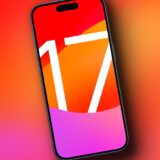


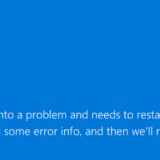


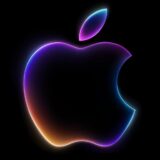

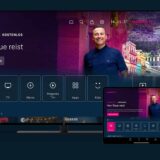
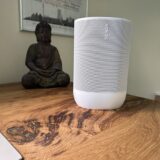
Das ist nichts anderes als eine weitere Linux-Distribution.
Insofern irreführend, das hier als gesondertes OS hinzustellen…
Warum nicht? Ist doch ok. Dieser Logik folgend dürfte man auch nicht über Android schreiben oder über macOS….
Finde ich auch, nur eine weitere Distribution. Wie wäre es mal mit einem Thema zu ReactOS? 😉
Ist zwar noch Alpha, aber trotzdem mal erwähnenswert wie ich finde. Und kein Linux.
Natürlich baut es wie die meisten OpenSource-Projekte auf einem Haufen Arbeit anderer auf (so etwa: Linux-systemd-GNU-Debian-Ubuntu-GTK…) ist jedoch trotzdem in seiner Gesamtheit sowohl ein Betriebssystem als auch eine Distribution. Und gerade die komplette Desktopumgebung und die meisten Standardapps werden vom elementary-Team selbst entwickelt, so dass es sich hierbei nicht um eine klassische Distribution (fremde Software nehmen, in Pakete packen und in bestimmter Zusammensetzung für die Nutzer verteilen) handelt.
Eben. Elementary hat eine ziemlich schicke Oberfläche die es so in keiner anderen Distribution gibt. Ein sehr angenehmes Einsteiger-Linux.
Naja, es ist ein weitere auf Ubuntu 16.04 (Debian) basierende Distribution. Die Entwickler haben sich durchaus sehr viel Mühe gegeben und ein macOS look like Linux für Umsteiger, oder Linux-Einsteiger, entwickelt.
Auf alle Fälle mal ein Blick wert, aber für mich wäre es kein Distribution für den täglichen Einsatz.
elementary hat nur leider den Nachteil, dass es auf Ubuntu aufbaut und somit keine unabhängige Distribution ist. Auch findet man oftmals veraltete Software in den Repos und es dauert teilweise recht lange, bis sie gewisse Bugs in den Griff bekommen. Wenn es so flott und stabil laufen würde wie Solus (solltet ihr euch auch mal ansehen und was drüber schreiben) wäre das klasse.
Ich hab hier mein 2007er 13zoll MacBook mit elementary für meine Mutter zurecht gemacht. Sie kommt ganz gut damit klar und läuft auch relativ geschmeidig damit der alte Haufen Elektroschrott. 😉
@Name: Falscher Beitrag 😉
Gibt’s schon Neuigkeiten zu elementaryOS auf dem Raspberry Pi?
Was noch zu erwähnen ist: Ein Update von Freya auf Loki ist (derzeit noch) nicht möglich. Außerdem ist die 32-bit-Unterstützung weg.